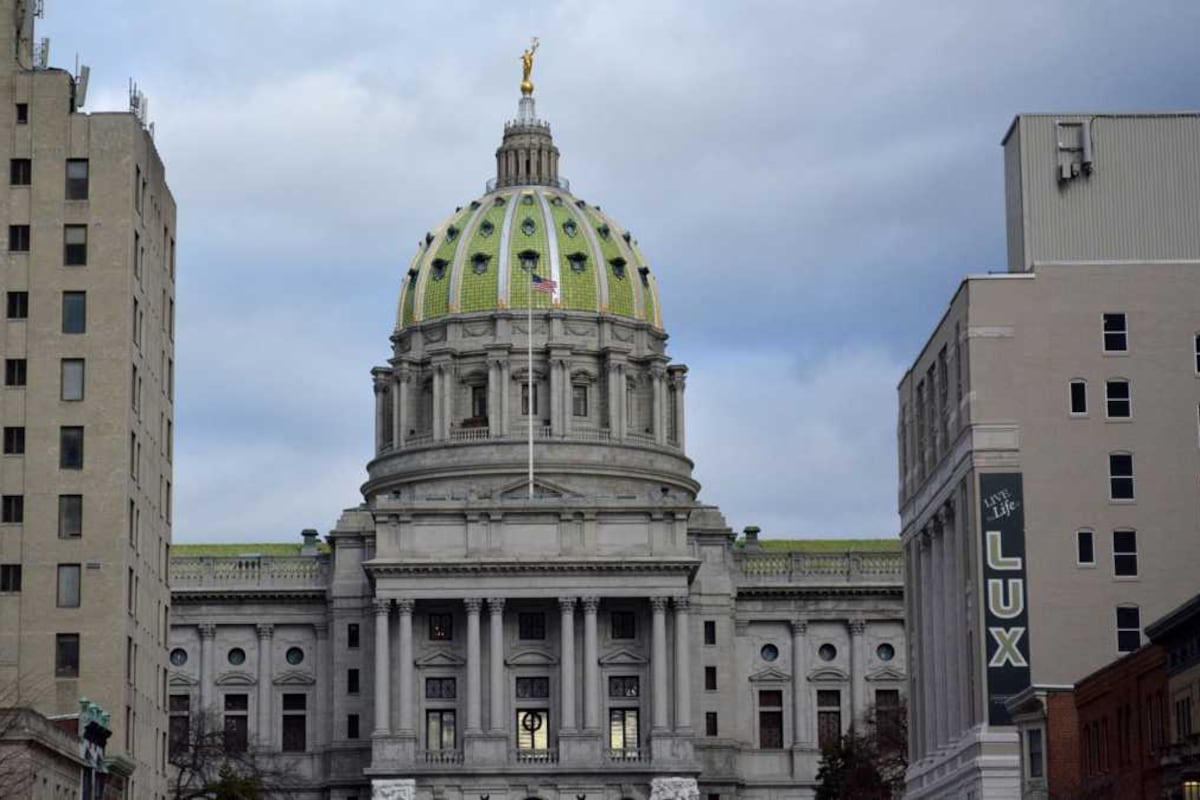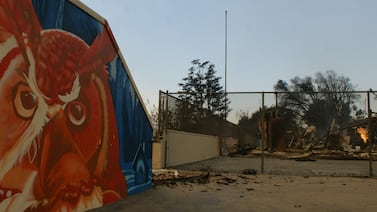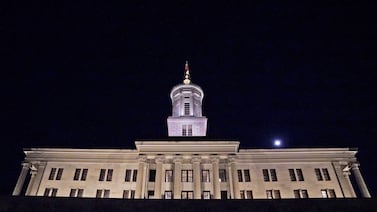Thousands of students across Pennsylvania are being denied their basic right to a quality education because of inadequate and unfairly distributed state funding, plaintiffs argued Friday in Harrisburg at the start of a long-awaited and potentially historic trial.
At the beginning of her opening statement, attorney Katrina Robson pointed to the superintendents in the courtroom, who represent the six school districts that are plaintiffs in the case.
“They are here today because of systemic widespread failure that is devastating the lives of the children they are charged with educating, the teachers they are in charge of supporting, and the communities they serve,” she said.
Robson, from the law firm O’Melveny & Myers, wove history, statistics, and heart-tugging stories of teacher sacrifice and student deprivation into a 90-minute opening statement to dramatize stark inequities among rich and poor school districts in the Commonwealth, where spending disparities are among the highest in the country.
“It’s easy to get caught up in numbers, but this isn’t a case about numbers,” she said. “It’s a case about people, about children struggling to overcome circumstances they can’t control. It’s about children who see what other schools have, and walk away believing somehow they are worth less than their peers, about educators who day after day have been struggling to educate students in oversized clases and crumbling classrooms.”
The plaintiffs, who also include three families, the Pennsylvania chapter of the NAACP, and the Pennsylvania Association of Rural and Small Schools, say that the system violates the state constitution’s mandate for a “thorough and efficient system of education” as well as its equal protection clause. The wide gaps in education spending discriminate against those who live in the underfunded districts, they say.
But attorneys representing Speaker of the House Brian Cutler and Senate President Jake Corman took a different view. Such stories of hardship “are red herrings,” said attorney Patrick Northen, representing Cutler, in his opening remarks. They are designed to “elicit sympathy or promote a generic notice of fairness.”
This case, he said, “is about constitutional law, not public policy.’’
All the plaintiff districts have basic educational amenities like desks and textbooks, he said, and some have more than that. He noted that Wilkes-Barre, one of the six districts that brought the suit seven years ago, has a brand new, state-of-the-art high school building.
The key question “is not about whether educational opportunities are uniform among all school districts or subgroups of students,” Northen said. Nor is it about “whether more funding could help some students.” Rather, it is about “whether the system that currently exists is so defective it reaches the point of being unconstitutional.”
Anthony Holtzman, representing Corman, said in all districts, “the constitutional minimum is being exceeded by a wide margin.”
Robson acknowledged that some of these districts have been able “to overcome inadequate funding” to offer advanced classes, focus students on their successes, and even save up for a new building. But doing this, she said, makes “heroes” of educators and administrators. “It doesn’t make the schools adequately funded,” she said.
She told the story of the athletic director in the William Penn school district who traveled to Ohio to get castoff equipment to set up a weight room for his team members. Robson showed a picture of the room, set up in the high school’s abandoned shower.
“Is not having an adequate weight room a violation of the Pennsylvania constitution?” Northen countered. “You cannot conflate things that are nice to have with what the constitution requires. Not funding a weight room is not unconstitutional.”
At the heart of the case, first filed in 2014, is Pennsylvania’s system for funding education — the amount of state aid it sends to its 500 school districts, and how that money is distributed. In Pennsylvania and elsewhere, state education aid is meant to make up the difference in local property wealth and taxing capacity.
Northern and Holtzman stressed that, on average, Pennsylvania ranks in the top 10 of states on what districts spend per pupil on education when state and local dollars are combined.
But, said Robson, “that ranking is based on an average, and that average hides what the Pennsylvania Department of Education has self described as one of the largest gaps of any state in the country in per child spending between the Commonwealth’s poorest and wealthiest districts.”
The Commonwealth also ranks 45th in the percentage of education costs picked up by the state compared to the local districts, just 38% compared to a national average of 47%.
And some districts tax themselves at far higher rates than others, but raise far less money.
“Taxable wealth varies dramatically among school districts,” Robson said. If the small rural Shenandoah Valley district, one of the plaintiffs, levied taxes at the highest local tax rate in the state, it would only raise $4000 per student. By contrast, if New Hope-Solebury in Bucks County charged the state’s average rate, it would raise $21,000 per student.
“There’s no doubt that there are strong public policy disagreements relating to the manner in which citizens should be taxed and the way in which education should be funded,” Northen said. “But can it be said that the petitioners’ view of the world is objectively correct, and that anybody who disagrees with them, including the majority of the General Assembly, is unreasonable or irrational?”
He and Holtzman said education is a matter of local control, and that it is reasonable to expect residents in wealthier districts to want to raise revenue for the benefit of their own students. Pushing equity could lead to a “race to the bottom,” Northen said.
The plaintiffs are also being represented by the Public Interest Law Center and the Education Law Center, or ELC. At a press availability after the arguments, ELC Executive Director Deborah Gordon Klehr said it was evident the two sides “have different understandings of what the legal standard is here. The reality is that we are not living in a thorough and efficient system of education, and the state is discriminating in the manner in which they fund schools.”
Christopher Lewis is representing Democratic Gov. Tom Wolf and the Pennsylvania Department of Education, who are also among the defendants. But he took a different tack than attorneys for the General Assembly, acknowledging “decades of systemic inequity in the nation’s public education system.” His witnesses “will testify the way schools are funded has a bearing on the educational outcome of students. One of the reasons there are gaps in achievement is gaps in resources.”
During a lunch break, more than 100 advocates rallied on the Capitol steps, including students, parents, educators, teachers union leaders, school board members, a representative of the state organization of school business officials, and clergy. In English and Spanish, they said that providing enough resources to educate all students in the Commonwealth is a matter of justice.
“One of the most important messages for all of us here today is to make sure that sisters and brothers in this Commonwealth watch this [trial] every day. The whole world is watching,” said Donna Cooper, executive director of Children’s First, formerly Public Citizens for Children & Youth.
Philadelphia Federation of Teachers President Jerry Jordan argued students in Philadelphia have been short-changed and stripped of essential resources that in wealthier, whiter school districts would be seen as non-negotiable. He used the case of Laporshia Massey, 12, a Philadelphia student who died in 2013 after suffering a severe asthma attack at a school without a nurse; the district cut its nurses when the state slashed its education aid. Philadelphia is not among the plaintiffs, but Superintendent William Hite is expected to testify.
“And yet, we continue to prove why our young people and their educators deserve to learn in buildings free from deadly toxins like lead and mold. We live in those conditions when there is a rainy day fund in this building,” Jordan said to the crowd in front of the Capitol.
Thaddeus Peay II, chair of the Greater Norristown NAACP education committee, said “this lawsuit is long overdue, our students have suffered for too long. Taxpayers have had to carry the weight that the state has refused to pick up. It is time that they’re held accountable for their unconstitutional actions. Our young Black and brown students need Pennsylvania legislators to not post Black Lives Matter, but actually live like they do.”
Because education is so important, “What’s on trial is the future of this Commonwealth,” Cooper said.
The trial will resume Monday with the plaintiffs calling their first witnesses.
Johann Calhoun contributed reporting.







